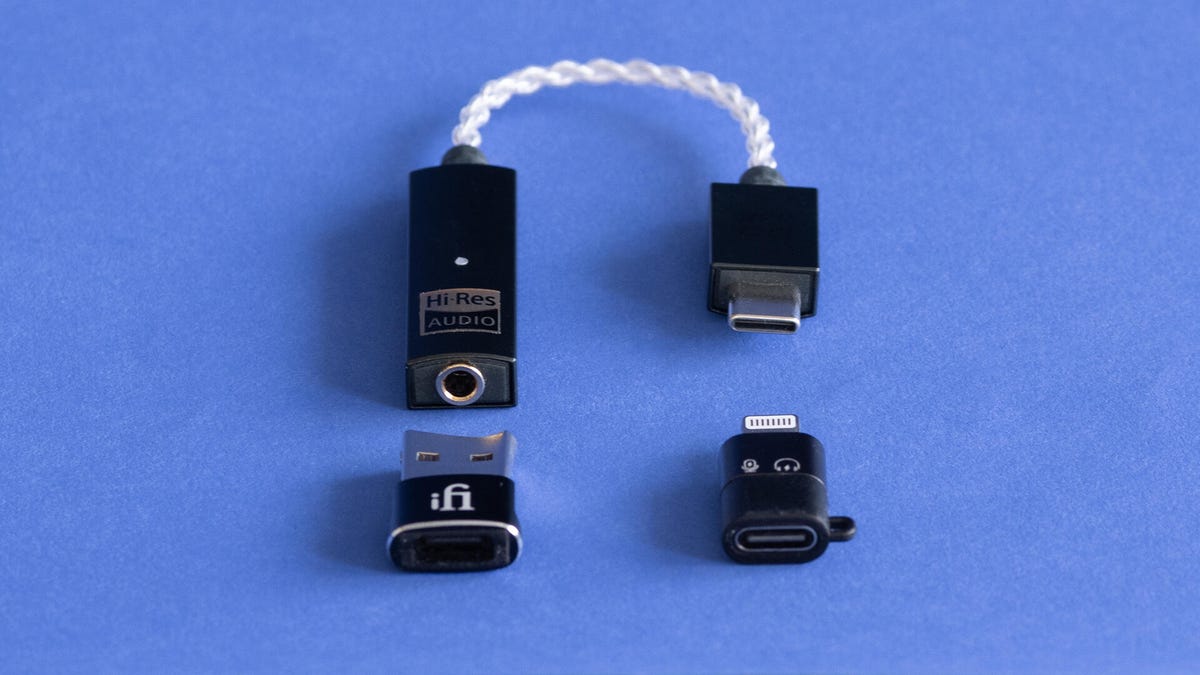Table of Contents
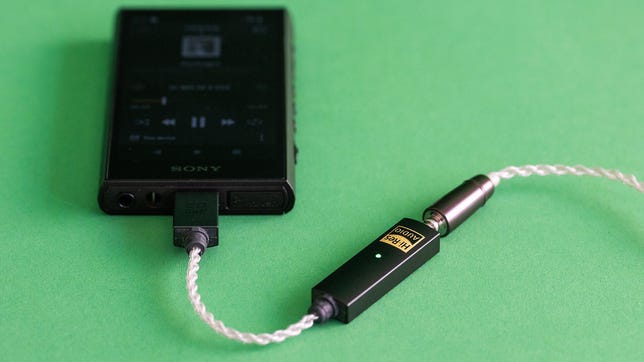
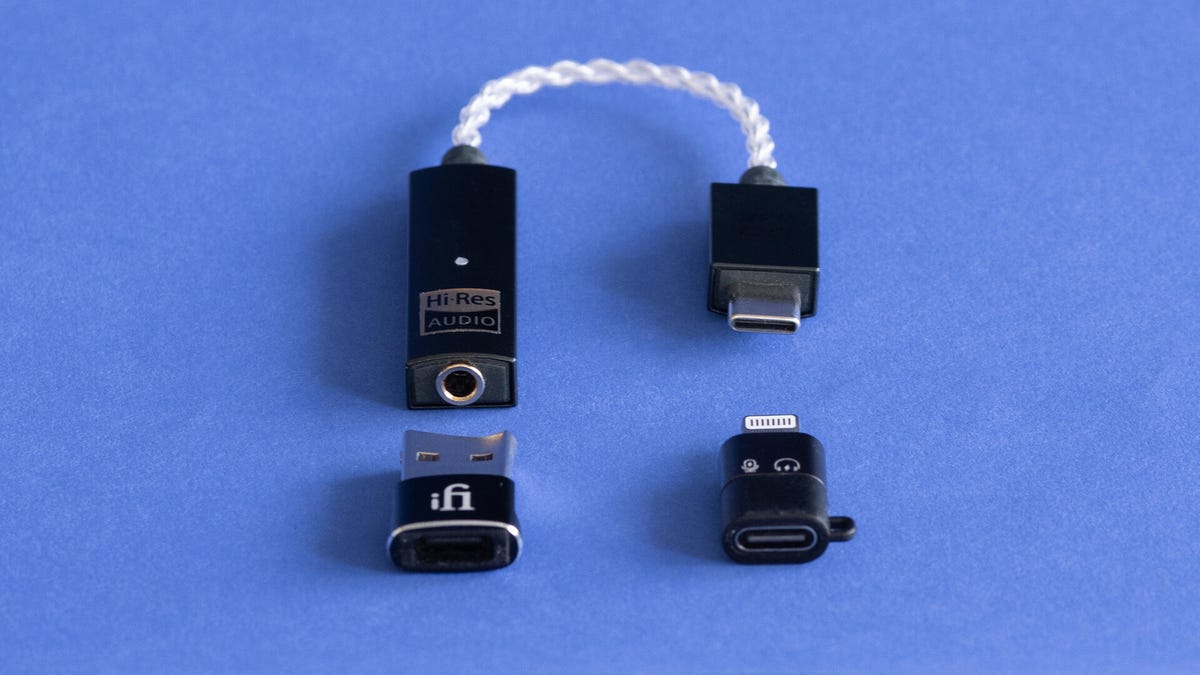
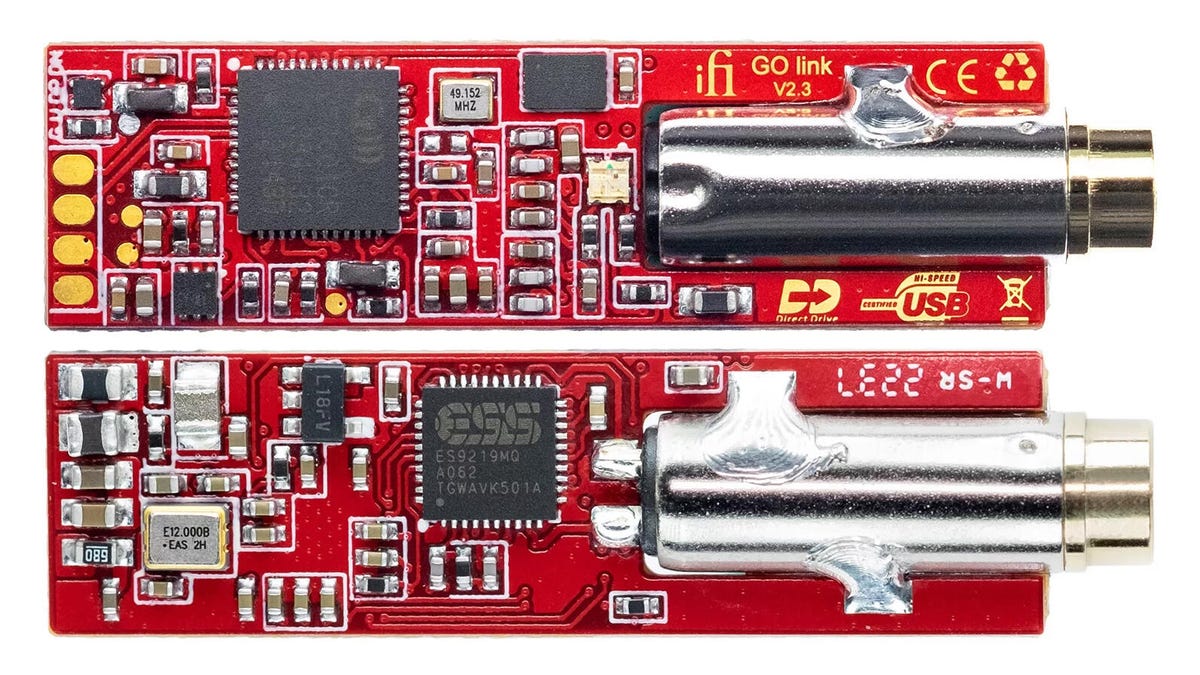
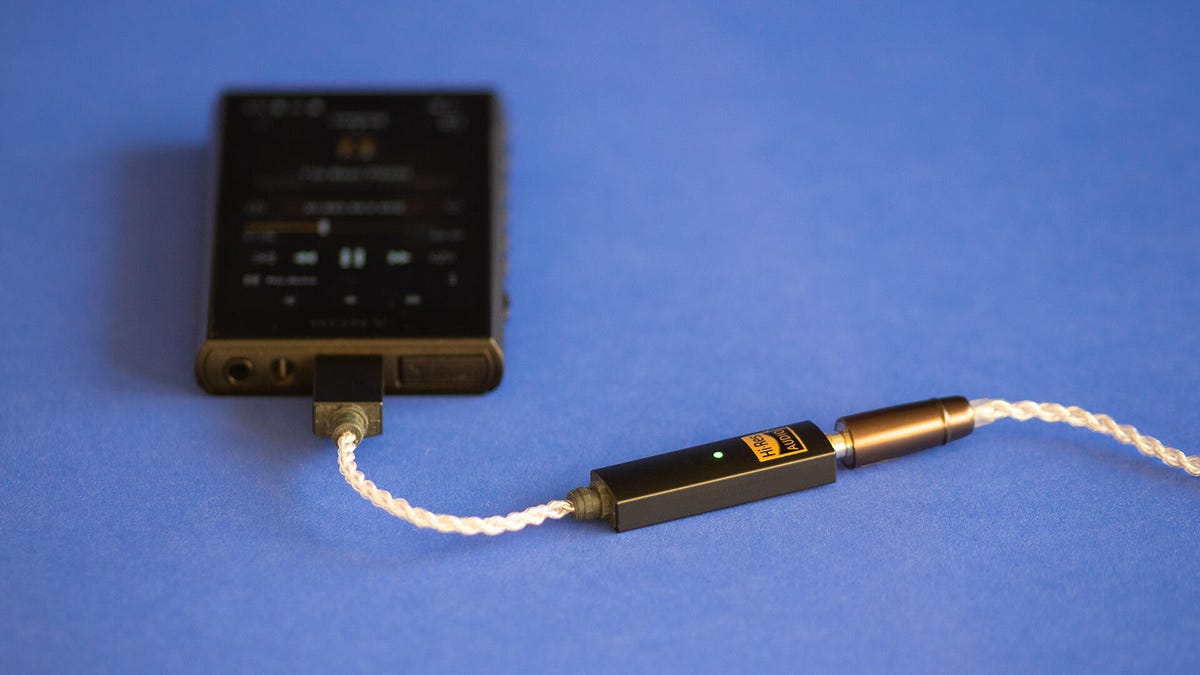
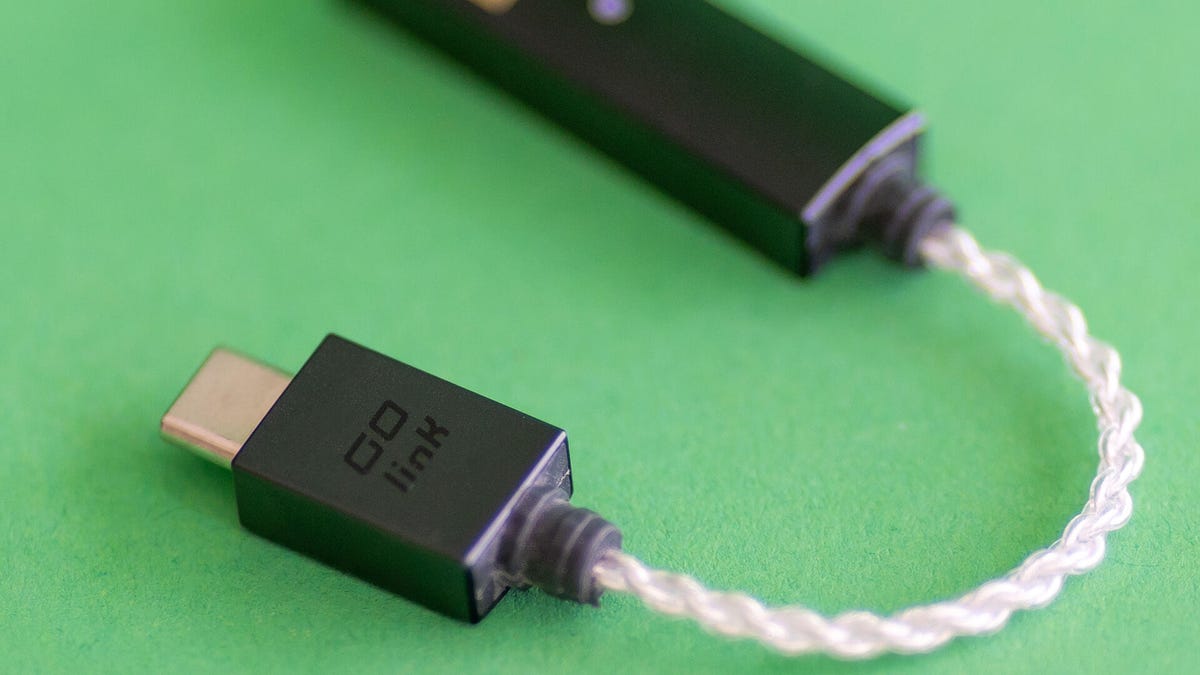
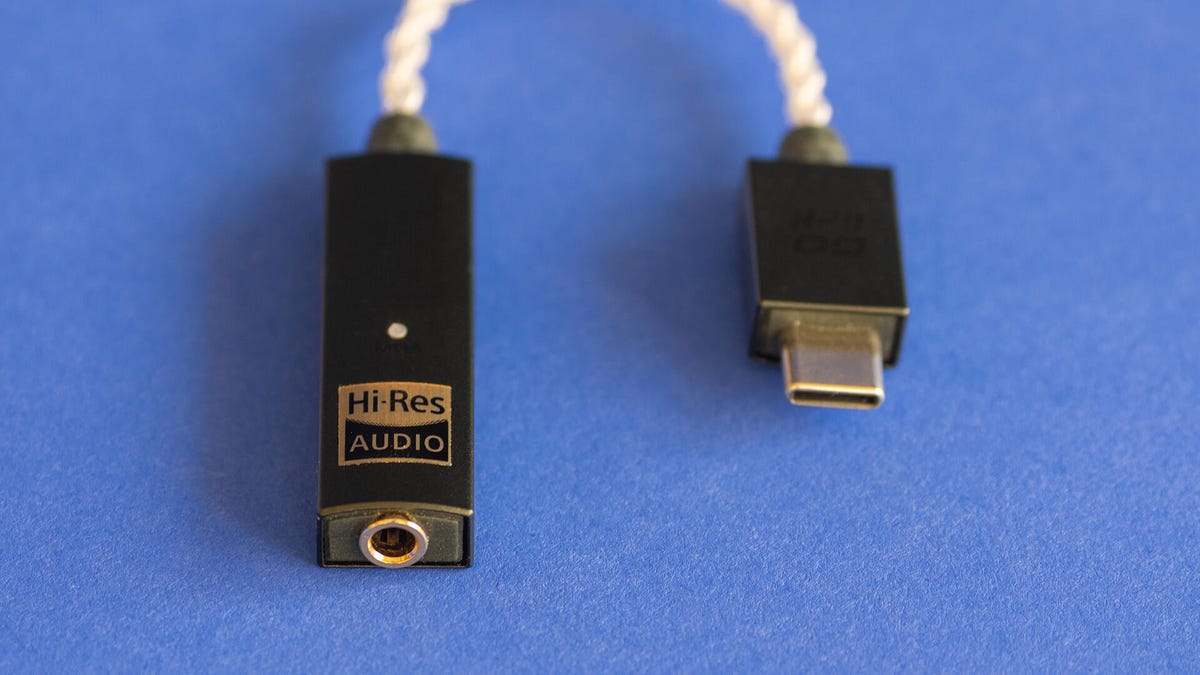
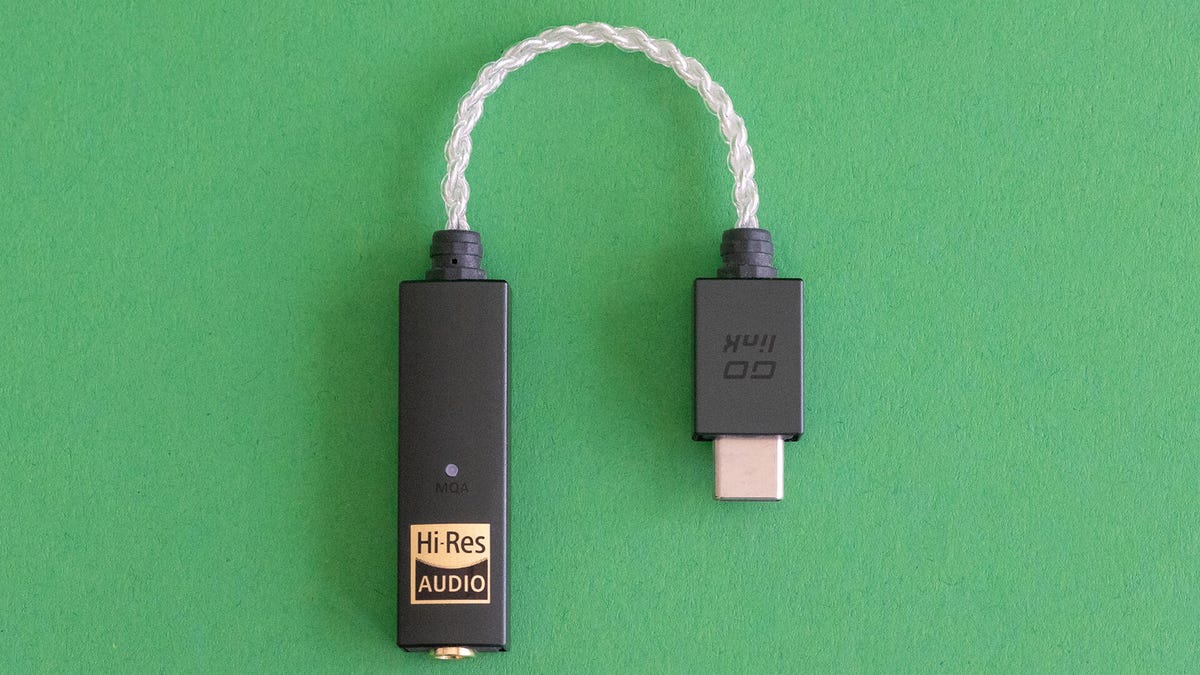

Advantages
- Good sound
- USB-C and Lightning adapter included
- Wired design should be easier to handle
Cons
- Cable is not detachable
- No app
Bluetooth headphones are cool and all, but are wireless really the way to go? The answer may surprise you! No, it’s not. Yes, for most people and in most situations, wireless headphones and earbuds are the epitome of convenience and sound fantastic. But despite constant and impressive improvements over the years, the real pinnacle of headphone sound quality remains in the realm of wired ones. The problem is that most modern phones don’t have a headphone jack. What to do?
The cheap—and often bundled-within-a-box—dongle that turns USB-C or Lightning into a headphone jack offers such meager power that it limits many decent headphones. Without enough power, even the best headphones don’t sound nearly as good as they could. But there are a number of high-end dongles that offer more power, better digital-to-analog converters, or DACs, and can give all but the most power-hungry headphones what they need.
A few months ago we had the AudioQuest DragonFly Cobaltwhich was a good, albeit pricey, option. The iFi Audio GO-link is a similar idea, but for a lot less money. The two-piece design is easy to live with in the real world, it has an ESS ES9219MQ/Q DAC, and it comes with both Lightning and USB-A adapters, so you can use it with just about anything. Oh, and it sounds good, too.
Specifications and such

The GO Link comes with USB-A and Lightning adapters.
- DAC chip: ESS ES9219MQ/Q
- Maximum sampling rate/frequency: 32-bit/384kHz
- Power (claimed): 70mW into 32 ohms, 14mW into 300 ohms, 2.05V into 600 ohms
- Weight: 0.4 ounce (11 grams)
The main body of the GO Link is about half the width of a USB drive (does anyone use those anymore?). Extending from it is a short, 2.8-inch twisted cable with “silver-plated copper conductors with individual polymer insulation.” I’m not sure how necessary that is in general, and certainly for something so short, but it’s a nice cable regardless. On the other end of that cable is the USB-C connector, which is housed in a tiny box less than half the size of the main body.
If there’s one thing about the design that concerns me, it’s that cable. It’s thin and flexible, which makes it easy to use when plugging into a phone in your pocket. Much easier than the rather bulky DragonFly Cobalt with its various adapters. I suppose as long as you’re careful with the GO Link you should be fine, but more than anything else I’ve owned in my life, cables that get used a lot break faster than any other piece of equipment. So I wouldn’t just throw the GO Link in the bottom of a bag and expect it to last. The biggest downside is that if that cable breaks you’ll have to replace the whole thing.
While the amount of audio you’ll find recorded at the iFi’s native 32bit/384kHz is tiny, there’s a fair amount at 24/192. Both of these are higher sample rates than the competing Cobalt can decode, which maxes out at 24/96. A huge difference? Certainly not, but it’s not a bad idea to buy a DAC that can play tracks at the maximum available resolution.

The GO-link is equipped with an ESS ES9219MQ/Q DAC.
In the box are two adapters that are barely bigger than the connection they enable. The first is a USB-C to Lightning adapter, the other is a USB-C to USB-A adapter. With these two, you can connect to virtually any modern-day USB device: connect the GO to your phone on your commute, connect it to your desktop when you arrive at work.
In the growing category of portable headphone amplifiers, some apps offer various digital filters or EQs that let you fine-tune the sound of your headphones. The fact that the GO Link doesn’t have one isn’t a deal-breaker. Generally speaking, apps like this are an added bonus, since the dongle’s sound is its main selling point. Still, added bonuses are, well, added bonuses.
Sound Quality Comparisons

The GO-link is connected to a Sony NW-A306 Walkman.
I compared the GO Link to the DragonFly Cobalt, a logical comparison in purpose if not price. I also compared the sound to the analog output of the Sony NW-A306, which has its own audiophile innards, if a little underpowered. For a basic comparison, I used the $10 Apple USB-C to 3.5mm AdapterI used the same large, over-ear, open-back headphones I used to test the Cobalt: the Audeze LCD-3 ($1,945) and the Sendy Audio Apollo ($500).
A quick note on headphone amps in general. The main point of a headphone amp is to deliver more power than is possible through the built-in headphone jack or the cheap dongle that comes with an iPhone. If your headphones are easy to drive, you may not notice any difference at all with an amp. If they are hard to drive, the difference should be quite noticeable. More volume is the most obvious change. Better sound at high volume is another possible improvement, as is a more realistic transient response from the first strike of a drum or the plucking of an acoustic guitar string.

A close-up of the USB-C connection end of the GO Link.
I started with the big Audeze LCD-3’s and got the track ready Light from Maria Chiara Argiró’s Closer. The GO-Link gave the LCD-3s a fair amount of power, with a sharp attack on the percussion and full, controlled bass, even at higher volumes. With the volume cranked all the way up, I was quite surprised at how loud I could get the LCD-3s. Well above what I would call “exuberant listening” and easily into the realm of “you really should turn this down.” That’s no mean feat for huge planar magnetic headphones. At these high volumes, the sound was a touch louder than at a normal listening level, but only a little.
The Cobalt, playing the same song, couldn’t get as much volume out of the LCD-3s. It was still above a normal comfortable listening level, but not as loud as what I was getting with the GO-Link. Not by much, though. The Sony Walkman, on the other hand, could barely get a reasonable listening volume out of the LCD-3s. And that was with the volume limiter off. The Apple dongle was even worse, with a maximum volume that is scientifically described as “needs more volume”. Since the latter two weren’t even remotely competitive, I concentrated on the Cobalt and the GO-Link.

The small light on the GO-link changes color depending on the frequency and type of file being played.
Switch to One Night/All Night by Justice, from HyperdramaThe percussion again had an immediate click through the GO-link. The Cobalt was very close, perhaps a touch louder at max volume. The Sendy Apollos are easier to drive than the LCD-3s, and as such were actually louder through both amps. This track has a snare sound that really cuts through the mix — through the GO-link it seemed a touch faster than the Cobalt, but again, it was very close. With other tracks and genres, the results were similar.
Nice dongle
I really liked the iFi Audio GO Link, especially for the $59 price tag. In terms of overall power and sound, it performed very similarly to the much more expensive and older DragonFly Cobalt. The Cobalt was designed in an era where the most common connection was the wider USB-A standard, so in order to work with a smartphone you’d need a dongle. The adapter that came with our unit bulked up the Cobalt considerably and was fairly inflexible, making it a bit of a pain to use. It makes your phone functionally larger and more awkward, and the dongle ends up hanging out of your pocket most of the time.

The GO Link is small and light enough that it’s barely noticeable when plugged in.
The GO Link, on the other hand, is barely noticeable as an extension of your headphone cable. This greater viability comes with the concern of potential damage to the connection cable. If you take good care of your gear, this shouldn’t be an issue, but the cable doesn’t exactly feel robust.
Considering the price difference, the iFi Audio GO Link seems like an easy choice over the Cobalt. Similar performance, lower price, and easier to live with. If you have a pair of wired headphones that you like to crank up the volume on, or just want them to sound better when you do, the GO Link is a cheap and easy-to-integrate way to do it.
In addition to his work in audio and display technology, Geoff hosts photo tours to cool museums and locations around the world, including nuclear submarines, aircraft carriers, medieval castles, epic 10,000 mile road trips and more.
Also check out Budget Travel For Dummieshis travel book and his bestselling science fiction novel about city-sized submarines. You can follow him on Instagram And YouTube.

